The sessions are led by Dr. Russell MacKechnie-Guire a professional rider, qualified coach (BHSI) and passionate scientist. The sessions are all evidence based, objective and bring together more than 15 years of scientific research whilst maintaining a practical and applied approach. The sessions are all open to horses and riders of all levels, and the information gleaned from the sessions can be applied to make real and long-lasting improvements. Centaur is passionate about advancing knowledge for the good of the horse; these sessions are guaranteed to give you new insights which can be taken forward to help improve horse and rider performance.
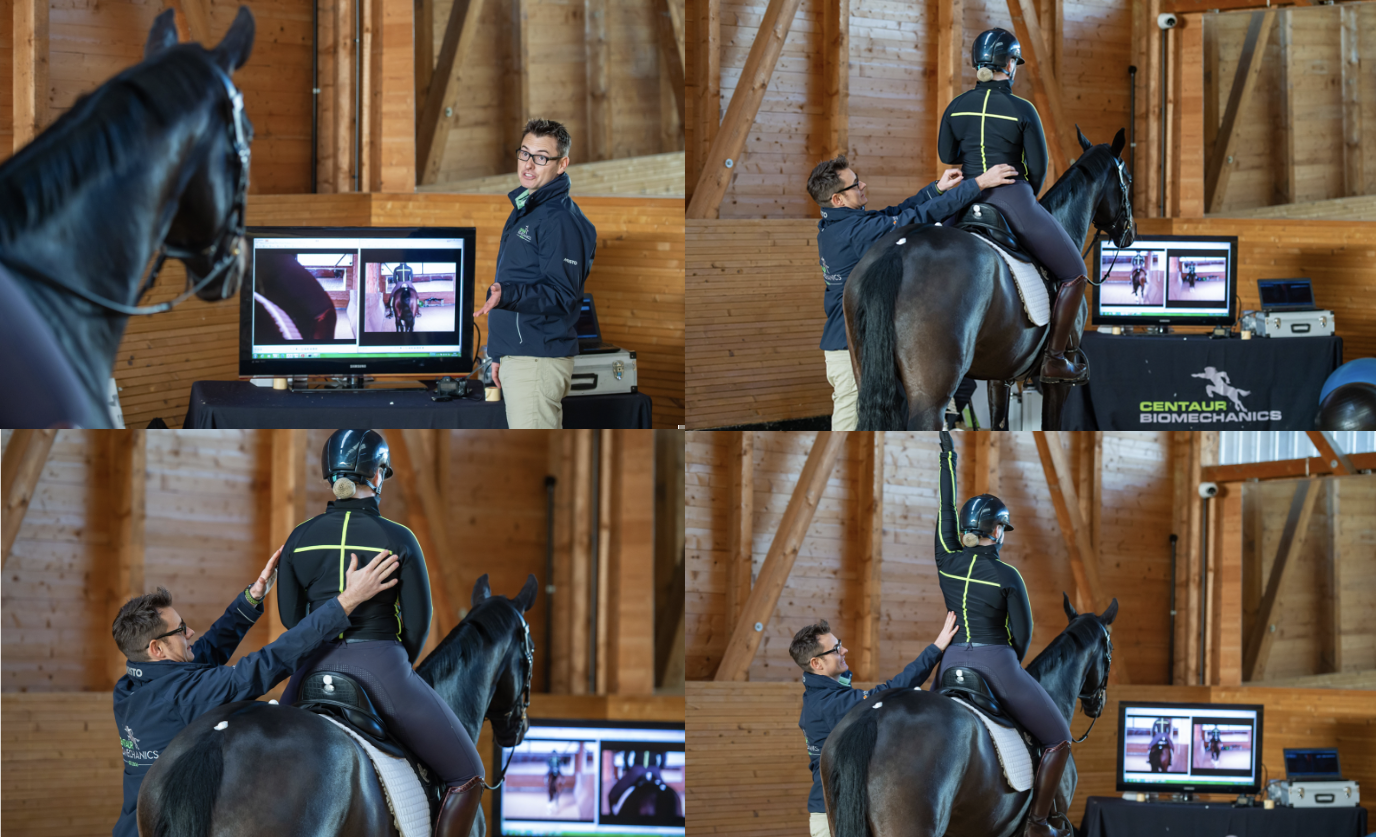
Generally, we have a hand and leg preference, along with subtle asymmetries from both a structural and functional perspective. For example, the majority of the population write with the right hand and prefer to kick a ball with the right leg. How do these inherent asymmetries affect our riding? One of the goals of riding is to train, and ride, in as symmetrical and efficient a position as possible, in order to ride effectively and in harmony with the horse. It is easy and all too common to generalise a rider’s position as being crooked with little regard to the effect that the rider’s own asymmetries may have on their position, along with the effect the horse and saddle may also have. The horse-saddle-rider interaction is complex, and to understand it fully requires a 360° approach when assessing the rider.
As the body of scientific evidence relating to rider biomechanics grows, and with the advent of state-of-the-art technology being brought to your arena, Centaur Biomechanics has designed an evidence-based assessment which allows us to firstly quantify the rider’s asymmetries and then evaluate how these may affect the horse-saddle-rider interaction. We then prescribe a proprioception and Pilates-based exercise programme to help support and strengthen the rider, improving their dynamic stability and allowing them to ride more effectively.
The Rider Biomechanics: A 360 Approach is a concept which can be divided into four sections.
Off-Horse Assessment:
The off-horse assessment looks at the rider’s functional asymmetries. Using state-of-the-art equipment, the rider’s pelvic function and strength are assessed along with their perception and body awareness, range of movement and grip strength. With so much pseudo-science in the industry and anecdotal claims, Centaur Biomechanics is committed to providing an evidence-based approach to assessing riders. Our assessment will measure and record the rider’s functional ability; this process is accurate, validated, reproducible and not subject to individual bias!
Functional Tests include:
- Pelvic function: adductor/abduction strength
- Hip flexion function
- Thoracic rotation
- Hand grip strength
- Seat pressure and symmetry
- Standing pressures
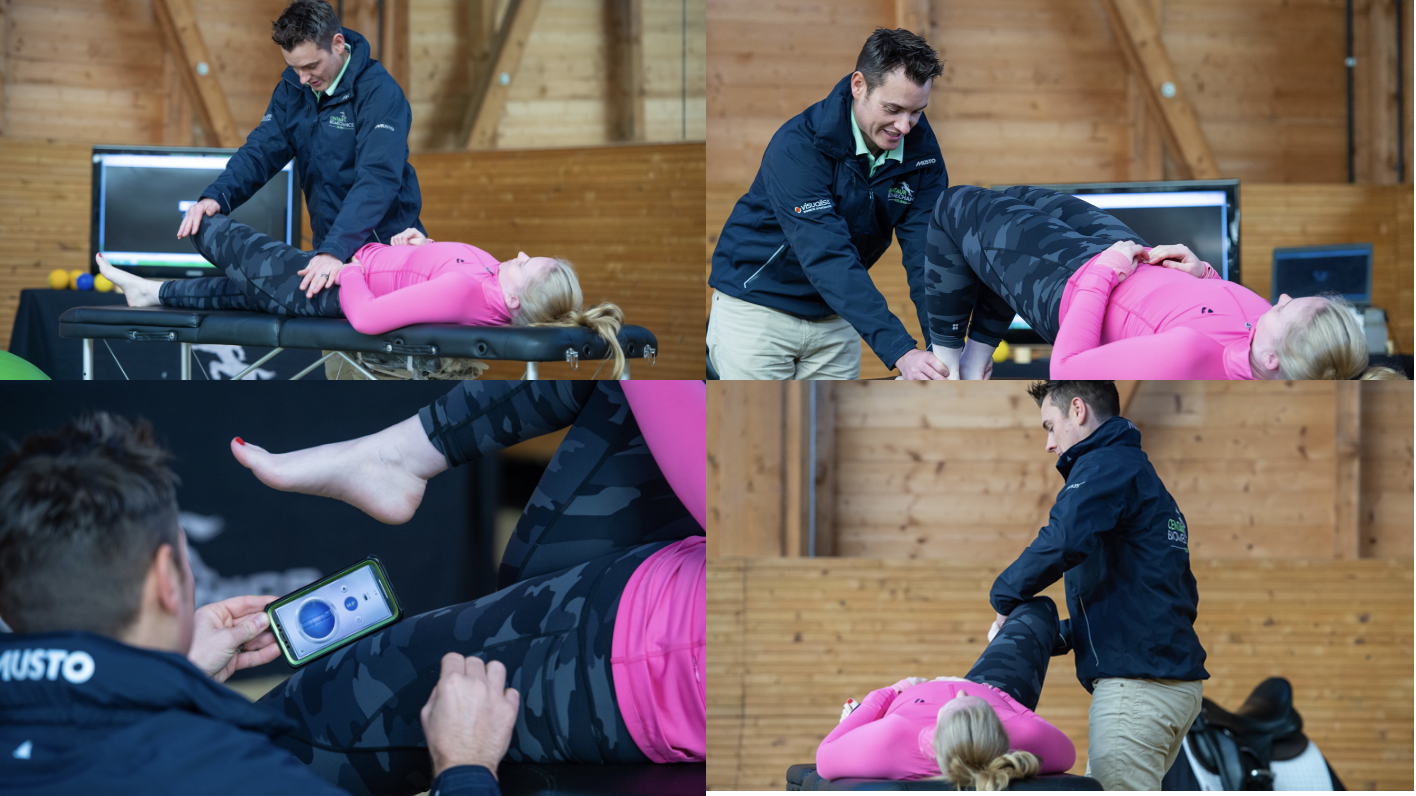
Ridden Assessment:
There are multiple factors which can affect rider position and often the interaction between the horse, saddle and rider is overlooked. When a saddle slips to one side often the rider is cited as the cause. However, based on evidence, generally the horse is the primary cause (see blog).
For the ridden assessment, riders wear a Visualise training jacket and/or small motion capture markers/sensors. The horse and saddle will be equipped with markers also. Once warmed up, riders will be asked to ride through a standardised exercise test featuring walk, trot and canter on both reins. Each test will be captured using high-speed cameras. Once completed, whilst in the arena, each test will be viewed and assessed. Particular attention will be paid to the horse-saddle-rider interaction. Here the off-horse assessment information will be included to help link the areas together.
After the initial analysis, working with Dr. Russell MacKechnie-Guire, the rider will work through a series of mounted Pilates-based exercises. These exercises are designed to improve rider awareness, proprioception, and position. During this session sensors, bands and balls may be used to help provide biofeedback to the rider. Post-exercise tests will be recorded and then compared with the initial recordings. This is hugely powerful as it allows the rider and their support team to see the benefits and advantages of any intervention. Sometimes it may appear to the onlooker that things have improved, but to the rider the feeling is unknown and can feel odd. With the benefit of the slow-motion recordings, the rider can clarify their feelings and start to retrain their muscle memory and motor control, thus learning to find a new and improved position.
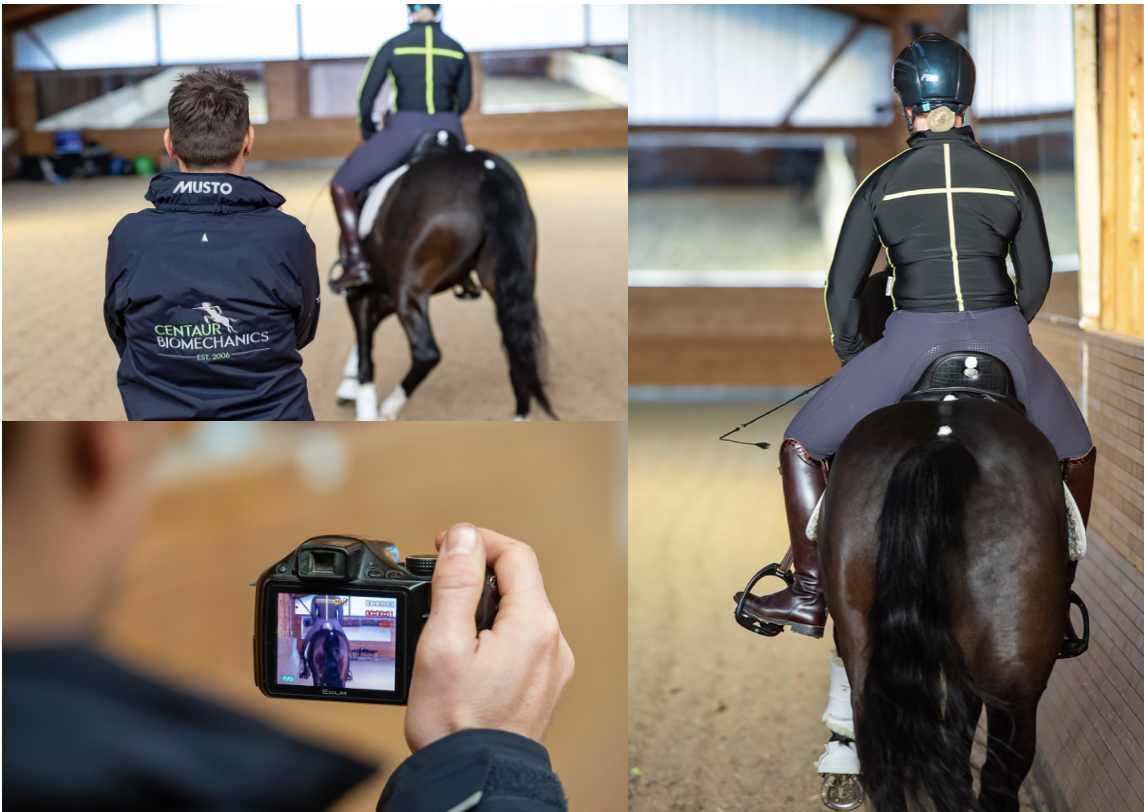
Proprioception and Pilates Based Exercise Prescription:
Combining the findings from the off-horse and ridden assessment, a Proprioception and Pilates-based exercise programme will be prescribed. There is a growing body of evidence to show that in order to improve the rider’s position they need to improve their proprioception, motor control, strength, and dynamic stability. This is also in line with Centaur’s ethos. The prescription will provide 10 easy-to-follow exercises which will help improve the rider’s dynamic stability off-horse. Based on previous work, the benefits will translate to riding over a period of four-six weeks. The exercises are fun, dynamic and can be completed within 10 minutes.
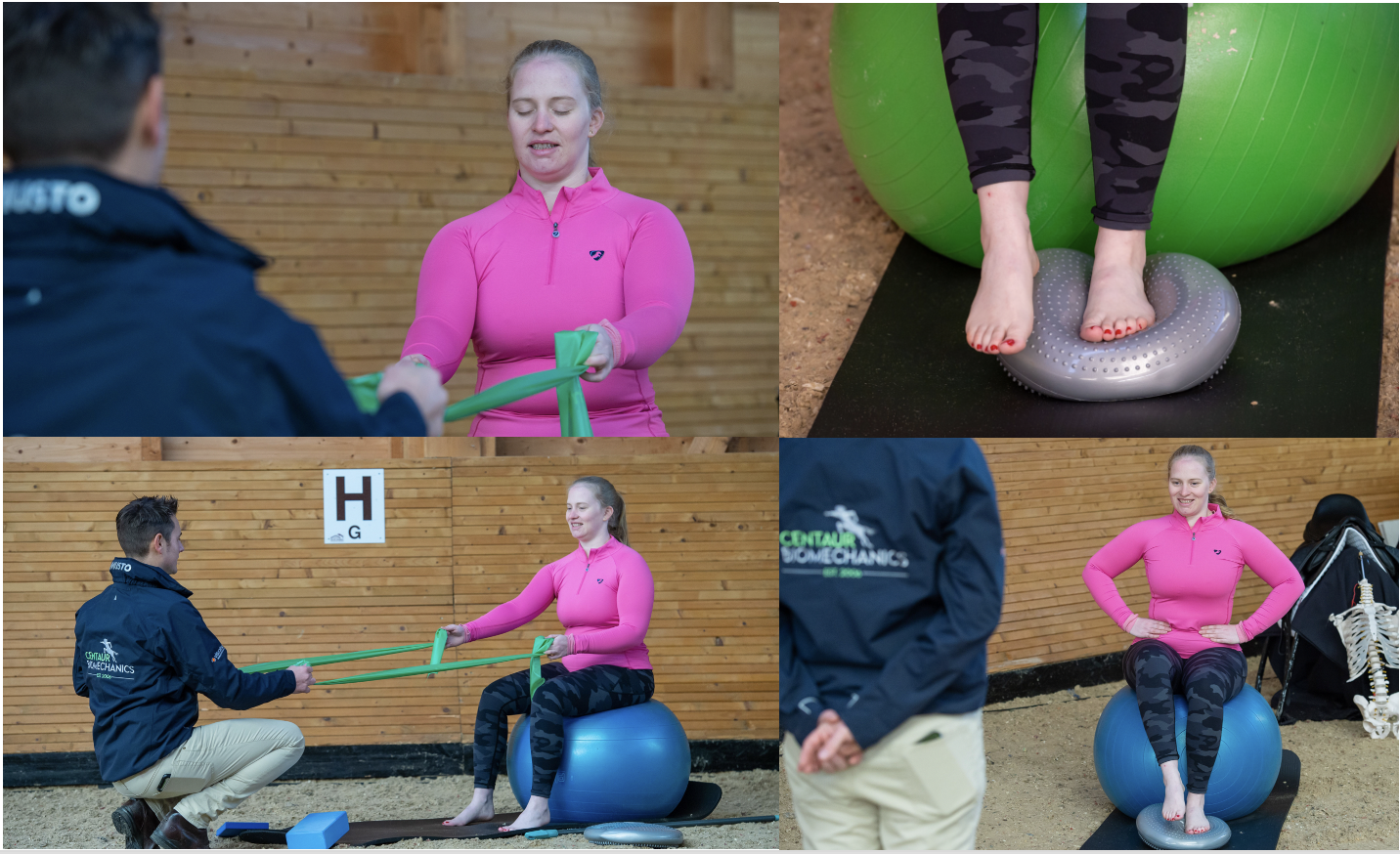
What do riders leave with?
A Rider Biomechanics 360 report is completed on the day. This report lists all of the outcomes of each of the tests, along with a list of what the measurements mean. This report can be shared with the rider’s coach, physio, therapist and/or health care professional. The report also outlines next steps and key areas to work on.
In addition to the Rider Biomechanics 360 report, riders will be provided with a Proprioception and Pilates-Based Exercise Prescription. The prescription will identify a number of exercises which can be carried out to help address some of the functional asymmetries observed during the session. Each exercise will have instructions along with a QR code taking the viewer to an online step-by-step video.
The rider can also purchase slow-motion videos that can be shared with their coach, physio, therapist and/or health care professional.
Session length: 60 minutes
- Off-horse: 15 minutes
- Ridden: 30 minutes
- Proprioception and Pilates-Based Exercise Prescription: 15 minutes
Session cost: £80:00
The sessions are led by Dr. Russell MacKechnie-Guire a professional rider, qualified coach (BHSI) and passionate scientist. The sessions are all evidence based, objective and bring together more than 15 years of scientific research whilst maintaining a practical and applied approach. The sessions are all open to horses and riders of all levels, and the information gleaned from the sessions can be applied to make real and long-lasting improvements. Centaur is passionate about advancing knowledge for the good of the horse; these sessions are guaranteed to give you new insights which can be taken forward to help improve horse and rider performance.

As the body of scientific evidence relating to rider biomechanics grows, and with the advent of state-of-the-art technology being brought to your arena, Centaur Biomechanics has designed an evidence-based assessment which allows us to firstly quantify the rider’s asymmetries and then evaluate how these may affect the horse-saddle-rider interaction. The 180 session is a great way to start to understand rider biomechanics.
Ridden Assessment:
For the ridden assessment, riders wear a Visualise training jacket and/or small motion capture markers/sensors. The horse and saddle will be equipped with markers also. Once warmed up, riders will be asked to ride through a standardised exercise test featuring walk, trot and canter on both reins. Each test will be captured using high-speed cameras. Once completed, whilst in the arena, each test will be viewed and assessed. Particular attention will be paid to the horse-saddle-rider interaction.
After the initial analysis, working with Dr. Russell MacKechnie-Guire, the rider will work through a series of mounted exercises. These exercises are designed to improve rider awareness, proprioception, and position. During this session sensors, bands and balls may be used to help provide biofeedback to the rider. Post-exercise tests will be recorded and then compared with the initial recordings. This is hugely powerful as it allows the rider and their support team to see the benefits and advantages of any intervention. Sometimes it may appear to the onlooker that things have improved, but to the rider the feeling is unknown and can feel odd. With the benefit of the slow-motion recordings, the rider can clarify their feelings and start to retrain their muscle memory and motor control, thus learning to find a new and improved position.

What do riders leave with?
A Rider Biomechanics mini report is completed on the day. This report can be shared with the rider’s coach, physio, therapist and/or health care professional. The report also outlines next steps and key areas to work on.
The rider can also purchase slow-motion videos that can be shared with their coach, physio, therapist and/or health care professional.
Session length: 45minutes
Session cost: £60:00
The coach has one of the most influential roles in the rider’s team and, sometimes, discussing ideas with a visiting coach can be hugely rewarding and accelerate progress. Dr. Russell MacKechnie-Guire is a qualified BHSI and UKCC coach and has ridden competitively in show jumping (Foxhunter/1.30m) and currently competes in dressage at National level. The Centaur Biomechanics coaching sessions combine more than 20 years of coaching experience coupled with a sympathetic, inspiring, passionate and evidence-based ethical approach. Russell’s coaching philosophy is to evaluate each horse and rider as individuals, identifying their strengths along with areas which could be improved. In discussion with the rider, the sessions will be structured with specific exercise to help support and improve them both.
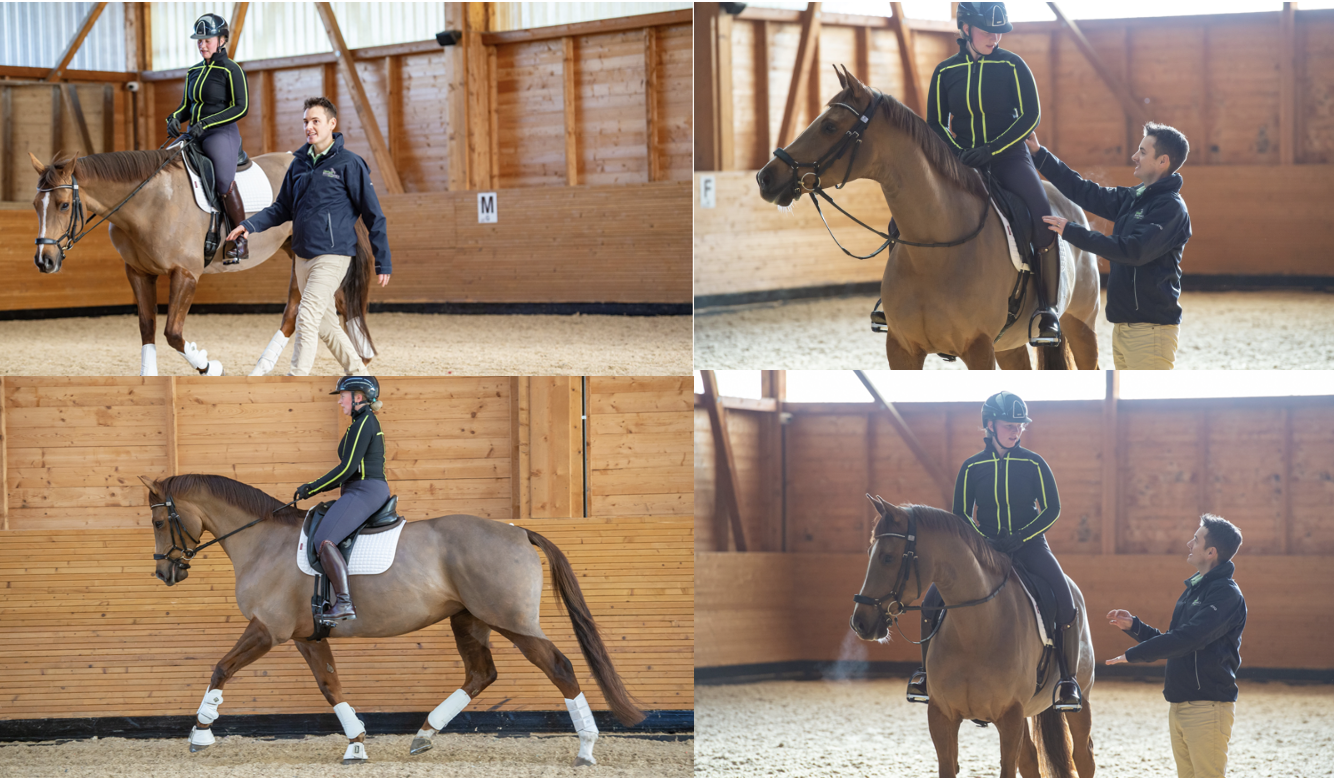
Exercises are specific to the horse and rider and their respective level. They are designed from a biomechanical perspective to improve rhythm, suppleness, contact, straightness, impulsion and collection. The coaching sessions make use of instant video feedback which is hugely powerful in aiding clarity and monitoring improvements and progress.
Session length: 45 minutes
Session cost: £60.00
The horse’s movement symmetry and gait is analysed using a validated sensor-based system. Dr Russell MacKechnie-Guire has been measuring horses’ gaits using objective measuring systems since 2006. Russell is highly experienced in collecting data but, equally important, is highly experienced at interpreting the data. Russell uses gait analysis for multiple research projects and has published the findings in more than 50 scientific publications.
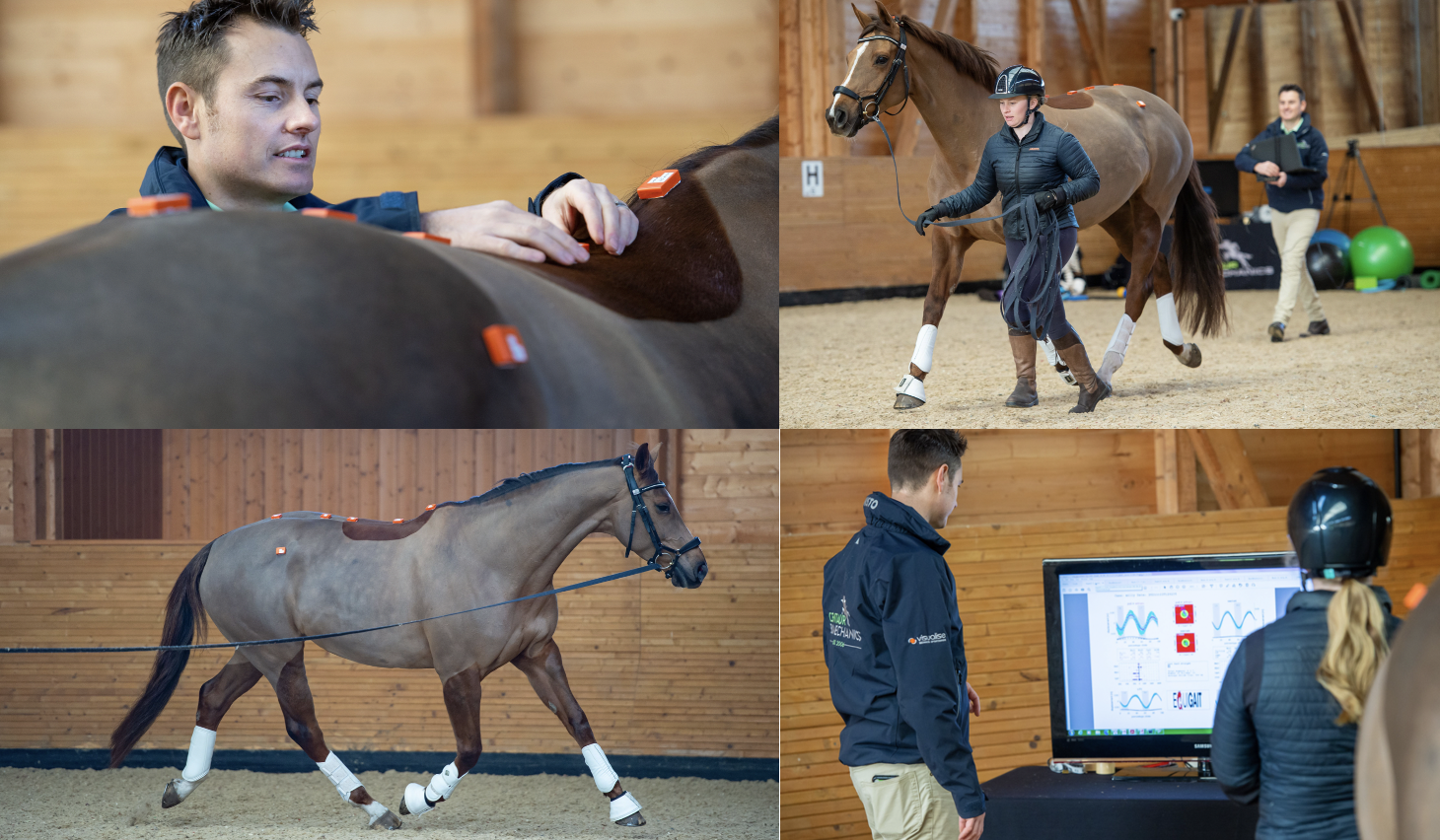
Objective gait analysis removes the subjectivity (guess work) when evaluating gait and identifying any movement asymmetries. The human eye captures at ~25 Hz which, when compared to methods such as high-speed cameras and sensors, the benefits of a more quantitative approach can be seen. Horses have a left and right-side preference, and it is appreciated that no horse is completely symmetrical. The purpose of these sessions is to objectively identify any movement asymmetries and then collectively, with the home team (vet, physio, farrier, coach, saddle fitter etc), discuss a plan to either limit further asymmetries developing and/or provide exercises to help reduce the amount of asymmetry present. One of the benefits of using quantitative assessments to measure gait is the ability to compare with previous assessments. Monitoring changes in gait due to interventions is the most powerful way to use such analysis. Has the intervention improved symmetry? Or has the asymmetry become more evident.
The data is processed onsite, and the reports are available to view immediately. After the assessment a written summary and symmetry reports are emailed to the client.
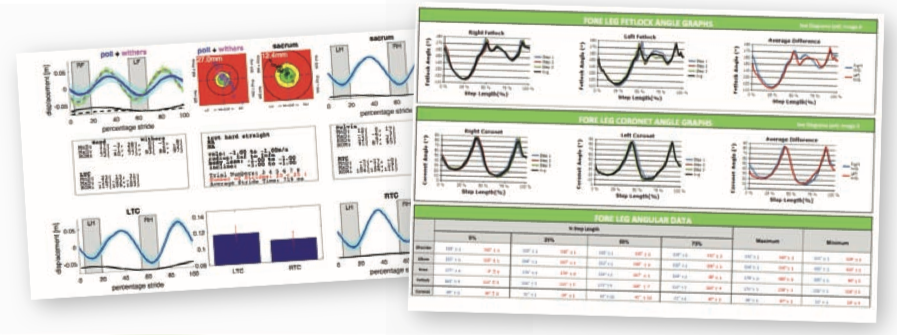
The sessions also include limb loading analysis. With the use of high-speed cameras and software, the way in which the hoof is loaded and interacts with the surface can be quantified. This information is useful for the farrier as a way of objectively evaluating limb loading and the effect that the horse’s foot balance and shoes can have on loading patterns.
Session length: 60 minutes
Session cost: £70.00
Pilates is a well-established method with health-related benefits. It can help strengthen and mobilise the body, improve movement patterns, enhance the rider’s body awareness, perception and mobility - all of which are essential for riding performance. Dr. Russell MacKechnie-Guire is a qualified Pilates Instructor (Level 3 in mat work) and intrinsic biomechanics trainer and he offers an innovative assessment of riders providing user-friendly and targeted exercises. Whilst certain areas of the rider system are more influential to riding performance than others, it is imperative that the whole rider is assessed for function. A weakness or movement deficiency in one area will affect the whole system. Rider-horse interaction is complex and, as such, requires a global approach.
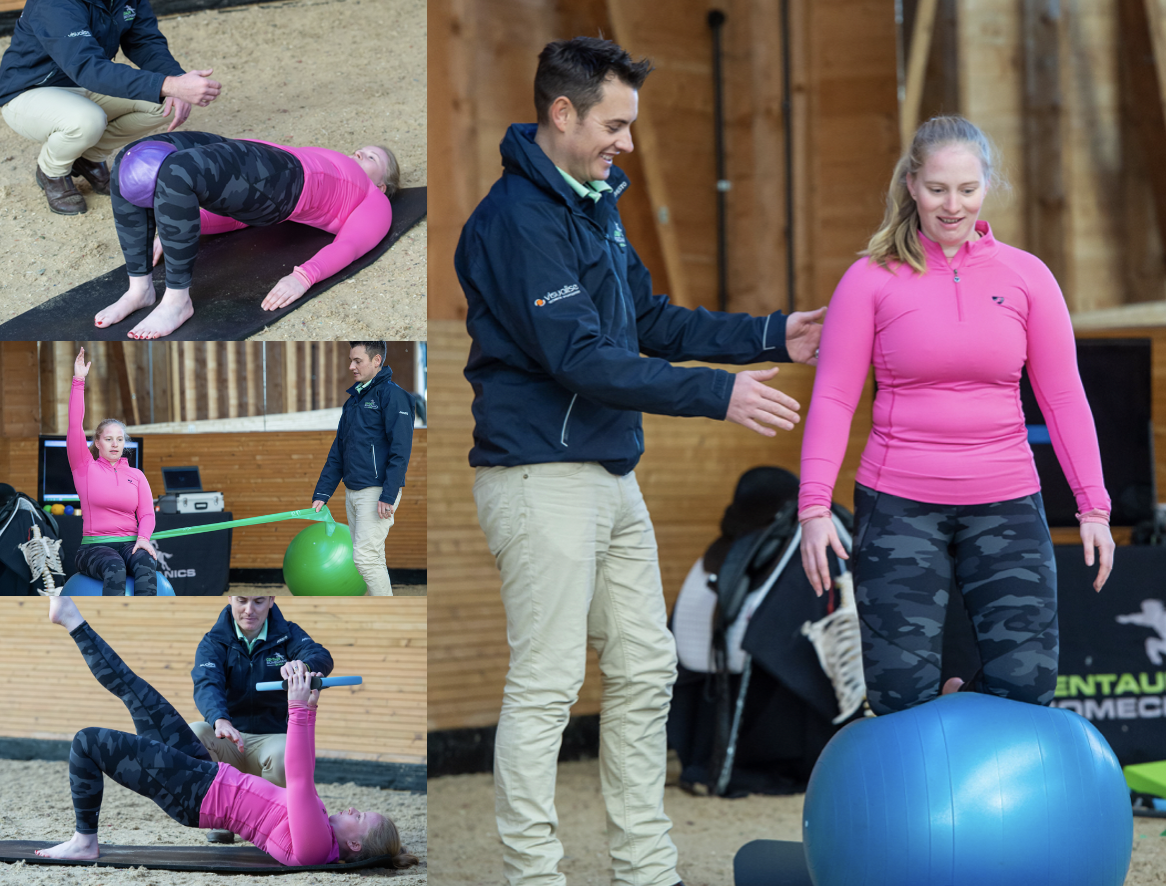
The Centaur Biomechanics Pilates sessions are unmounted and combine a series of tests and measurements which are designed to assess the rider from a global functional movement perspective. To be effective, the rider must be able to withstand the dynamic forces they generate, follow the movements of the horse, and influence the horse. The prescribed exercises are designed to enhance the rider’s dynamic stability which, if improved off the horse, can be translated to the horse - which will improve the rider’s performance and effectiveness.
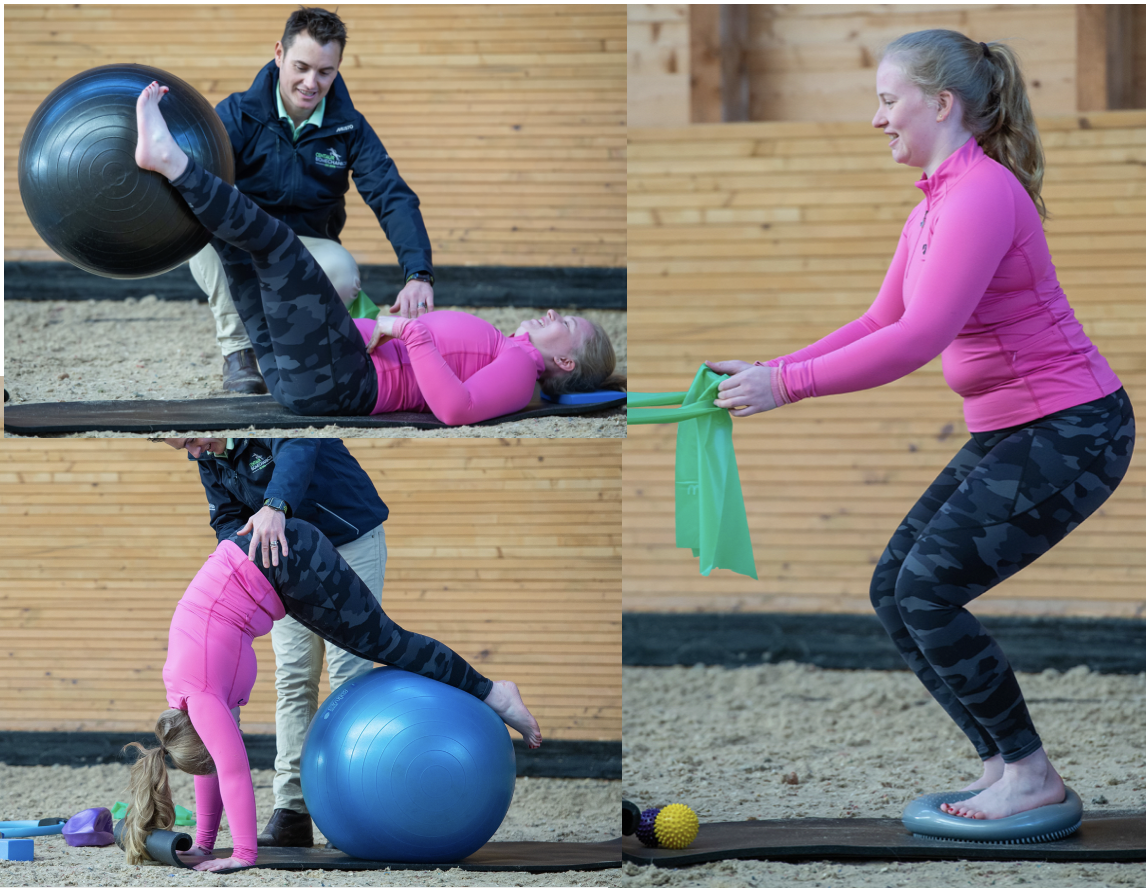
Session length: 60 minutes
Session cost: £45:00